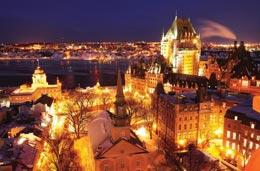Blame Quebec: Why halting the immigrant investor programme hasn’t halted flow of immigrant investors to Vancouver

By Ian Young,
South China Morning Post
Special to The Post
One of the biggest questions among Vancouver real estate types for 2014 was this: Why hasn’t the cancellation of the Chinese-dominated immigrant investor programme halted price rises at the top end of the market yet?
But a better question would be this: Why hasn’t the cancellation of the immigrant investor programme halted the flow of investor immigrants to Vancouver yet?
It might surprise some to discover that in spite of the announcement more than 10 months ago that the federal IIP was being scrapped, rich immigrants continue to arrive in Vancouver under the defunct scheme to this day, and likely will continue to do so for several months.
That’s because would-be immigrants generally get one year in which to activate their permanent residency from the time they undergo their mandatory medical checks. Not only that, some of the approved immigrant investors hadn’t had those medical exams at the time the government announced the February 11, 2014, cancellation of the programme and suspended most of its assessments. So their arrival will potentially drag on beyond that date in 2015.
On top of these, according to Citizenship and Immigration Canada, there are a “small number of cases where a selection decision [approval] was made on or after February 11, 2014 … and a final decision was made before Bill C-31 became law [on June 19, 2014]. Those applications are not affected by the legislation.”
So the tap has been turned off, but there’s still some water in the hose. An immigration industry source told me he expects the last dribble of federal investor immigrants to have arrived by summer 2015.
There’s a second, much larger, consideration - many investor immigrants will continue to arrive in Vancouver every year for the foreseeable future, after deceptively applying to immigrate to Quebec under that province’s still-operational version of the IIP. How many? Probably equivalent to a majority of BC’s previous annual arrivals.
Quebec in recent years approved more investor migrants than Ottawa did for all other provinces combined. From 2008-2012, certificates of permanent residency were issued to 27,490 QIIP immigrants, compared to 24,555 issued by Ottawa.
Yet the vast majority of QIIP immigrants do not end up living in the French-speaking province; federal data shows 89 per cent no longer have Quebec addresses by the time they renew their permanent residency cards after five years in Canada. And Ottawa is in no doubt about where they end up.
“Quebec is taking the money of immigrant investors and using it, but the British Columbia taxpayers must pay the price for the social services provided to immigrants selected by Quebec,” then-immigration minister Jason Kenney told a parliamentary committee in 2013.
The Canada-Quebec Accord’s immigration arrangement, he continued should “not [be] about taking money from Chinese millionaires so that they settle in Vancouver”.
For 2015, Quebec plans to approve 1,750 primary IIP applicants (of whom 1,200 will come from greater China). That likely represents about 6,200 individuals, including family members. Assume 89 per cent are destined to live outside Quebec; then assume the resultant 5,500 or so are dispersed about the other provinces in a manner that reflects applications under the federal scheme (68 per cent of whom said they planned to move to BC in 2011, the last year the scheme was fully operational). Thus, it’s reasonable to estimate that BC (ie: Vancouver) might continue to receive 60.5 per cent of the entire QIIP intake, some 3,750 QIIP immigrants per year.
That is a very hefty number compared to the KNOWN average annual arrivals of 4,400 or so investor immigrants in BC from 2005-2013, although this average does not take into account the unknown number of QIIP immigrants who activated permanent residency in Quebec or elsewhere before heading to BC (QIIP immigrants only show up on BC immigration statistics if they take the risk of activating their permanent residency in BC, where they face increased scrutiny from border officers).
However, we can make an educated estimate of the ACTUAL number of QIIP immigrants to have previously ended up in BC, based on that same 60.5 per cent assumption; its application to the 42,728 QIIP approvals from 2005-2012 results in 25,850 expected QIIP arrivals in BC. Add this to the 20,041 federal IIP approvals for BC in the same eight-year period and we can estimate total BC investor migrant arrivals at 45,891, an average of 5,736 per year.
In other words, the 3,750 expected QIIP arrivals in BC in 2015 (and thereafter) might represent about 65 per cent of the historical annual average to have arrived in the province under both the federal and Quebec schemes.
There are a lot of numbers to digest here, but the takeaway should be this: Even after the cancellation of the federal IIP comes into full and final effect in mid-2015, I’ll be surprised if the total number of rich immigrant investors arriving in BC is even halved, compared to historical levels. More likely, the federal IIP’s elimination might only result in investor immigrant arrivals being cut by about one third. For better or worse, Vancouverites will have Quebec to thank for that.
The Hongcouver blog is devoted to the hybrid culture of its namesake cities: Hong Kong and Vancouver. All story ideas and comments are welcome.
Connect with me by email ian.young@scmp.com or on Twitter, @ianjamesyoung70.
Ian Young is the South China Morning Post's Vancouver correspondent and the author of the Hongcouver blog, where this piece was first published. The original can be found here http://www.scmp.com/comment/blogs/article/1671607/blame-quebec-why-halting-immigrant-investor-programme-cant-halt-flow









